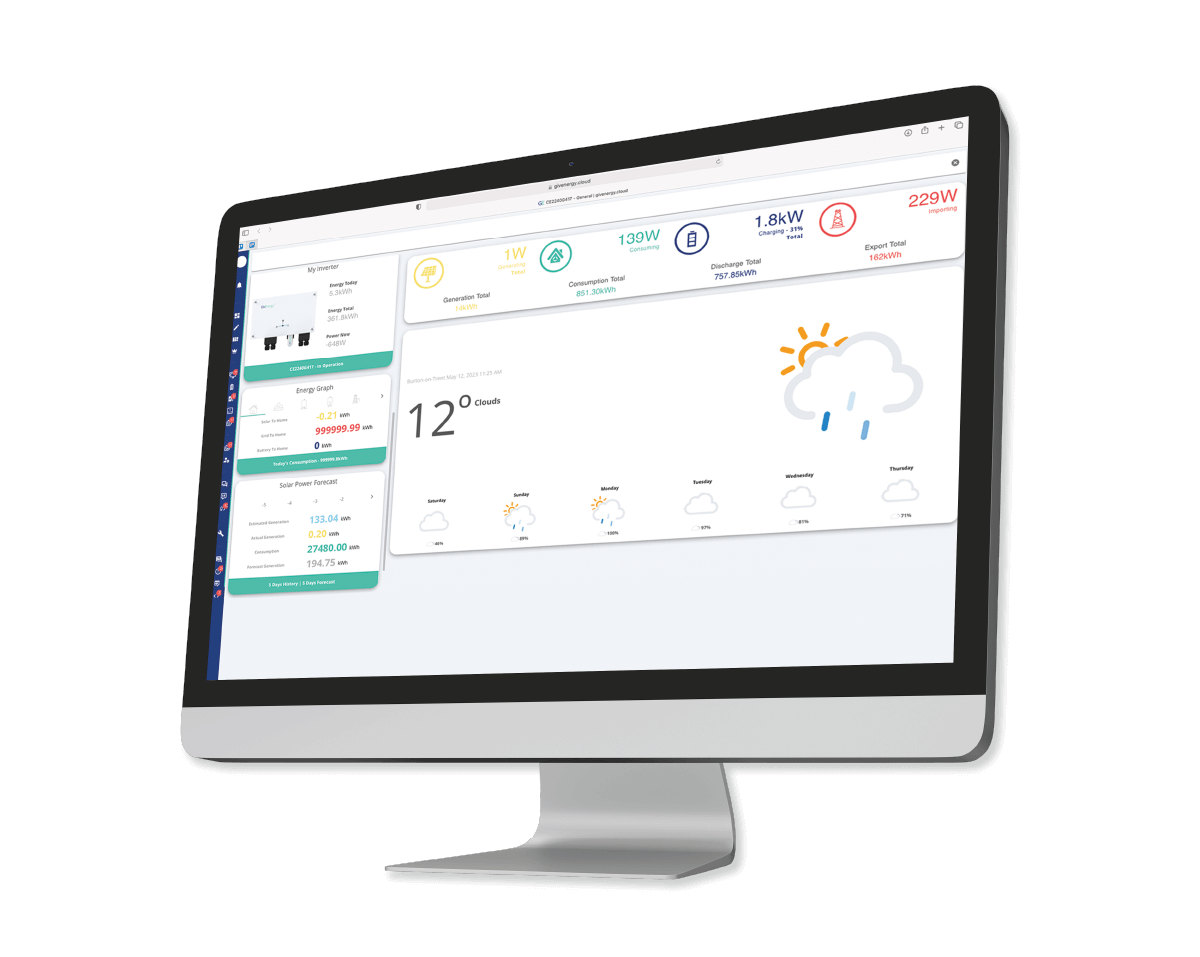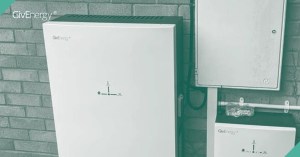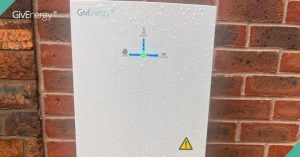Getting started with...
Solar battery storage
Getting started with…
Solar battery storage
-
Solar battery storage allows you to save the sun’s energy to run on solar morning, noon, and night

-
The battery will take its charge from your solar panels, storing excess generation for later use in the home

-
By pairing solar with storage, you can get make bigger energy bill savings, bigger home carbon reductions, and get better control over your energy usage

-
Solar battery storage allows you to save the sun’s energy to run on solar morning, noon, and night

-
The battery will take its charge from your solar panels, storing excess generation for later use in the home

-
By pairing solar with storage, you can get make bigger energy bill savings, bigger home carbon reductions, and get better control over your energy usage

Solar battery storage refers to the pairing of a home battery system with a solar array. So, as well as generating solar energy through your solar panels, you can also store that energy for later use via your battery.
You can retrofit a battery to an existing solar installation, install a solar battery before having your solar panels fitted, or install both together for new solar projects. With so many options, you likely have lots of questions. So, with that in mind, here’s a useful guide to solar battery storage.
What’s on this page?
-
| How does solar battery storage work?| How does solar battery storage work?
01
-
| Do solar panels always need solar battery storage?| Do solar panels always need solar battery storage?
02
-
| Can I add battery storage if I already have solar PV?| Can I add battery storage if I already have solar PV?
03
-
| What about adding battery storage before I install solar?| What about adding battery storage before I install solar?
04
-
| Why should I install solar battery storage?| Why should I install solar battery storage?
05
-
| Will any battery be compatible with my solar array?| Will any battery be compatible with my solar array?
06
-
| What size solar battery do I need?| What size solar battery do I need?
07
-
| Can the same installer fit my battery and my solar panels?| Can the same installer fit my battery and my solar panels?
08
-
| How long will my solar battery live?| How long will my solar battery live?
09
-
| How can I manage my solar battery storage solution?| How can I manage my solar battery storage solution?
10
01 How does solar battery storage work?
Solar battery storage systems give you the ability to run your home on solar power morning, noon, and night. (And not just when the sun is shining.) With a solar battery installed, you can store the energy generated by your solar array for later use.
Your solar battery storage system will take its charge from your solar panels, storing excess generation in the battery. This energy will then be discharged to power your home when required. So, you’re less reliant on the grid and its peak charges.
Only if your demand is higher than the power available from the battery and solar generation will the system draw power from the grid. Here, however, smart algorithms mean that the system will capitalise on off-peak rates. So, your solar battery will charge when grid energy is at its cheapest and greenest.
In short, solar battery storage makes your intermittent solar energy easier to harness and use consistently.

02 Do solar panels always need solar battery storage?
Your solar panels will still work without adding a battery. However, they won’t be as effective when it comes to saving you money and reducing your carbon footprint.
If you have solar panels – but don’t have a solar battery storage system – you can only use the energy from solar when conditions permit. So, you’ll generate lots of green energy in the day. Without a battery, though, you won’t have stored any of this energy for later use, during peak expensive hours. (I.e., when you need it most.) Instead, that excess energy will all go back to the grid.
With a solar battery storage system, you can keep that excess energy for yourself. So, with access to the stored energy generated from solar, you can run your house on green battery power. It is together, then, that solar and storage drive maximum value.
03 Can I add battery storage if I already have solar PV?
Adding storage to an existing solar array is both easy and advisable. The solar battery storage system can be installed without any changes to either your solar panels or your Feed in Tariff. (If in place.)
In these instances, an installer will fit a solar battery to store your excess solar. They’ll also install an AC coupled inverter that will communicate between solar PV, the battery, and the home.
This installation process is straightforward, and typically done inside a day. Once completed:
- The power from your existing solar panels will charge the battery
- The battery will supply the home
- Any leftover energy is sent back to the grid
04 What about adding battery storage before I install solar?
You might choose to install a solar battery before you have your solar array fitted. Doing so is perfectly straightforward – just make sure you consider the inverter you choose for your installation.
An inverter is the computer part of a battery storage system that makes the solution ‘smart’. So, any battery storage system needs, as a minimum, a battery inverter.
However, if you’re also having solar installed a little further down the line, you’ll need a battery inverter plus a solar inverter. (Essential for safely converting current back and forth from the solar panels, to the battery, to the home.)
At GivEnergy, we offer:
- AC coupled inverters (a battery only inverter)
- Hybrid inverters (a battery plus solar inverter in one solution)
- Integration with third-party solar inverters
So, you can easily add solar battery storage before installing your solar panels, with lots of great options when it comes to readying the kit for solar.
05 Why should I install solar battery storage?
Solar battery storage is the quickest, most effective way to:
- Save money on your energy bills. Based on averages, solar and storage will reduce your energy bills by 85%. This is because you have lots of stored energy which you can use to power your home during peak hours.
- Cut your home carbon emissions. You’re powering your home on solar power – meaning you’re drawing less on the grid, and relying less on fossil fuels.
- Get smarter about your energy usage. Your solar battery storage system also includes energy management software. So, you get easy digital control, up-to-the-minute visibility, and granular data insights. In turn, you can keep optimising over time.
- Protect your power supply from disruption. With stored solar energy, you can safeguard against outages.
- Maximise an investment in solar. If you’ve already got solar panels in place, adding a storage battery helps you get the most from them. If you’re starting a new solar project, adding solar battery storage from the off helps you save the most money, in the shortest timeframe.
06 Will any battery be compatible with my solar array?
Yes, all GivEnergy batteries and inverters are 100% compatible with all solar panels as standard. Plus, we can also integrate with many third-party energy technologies that you might already have, such as:
- Solar inverters
- Air source heat pumps
- Power diverters
- EV chargers
So, you can choose from the GivEnergy range with freedom.
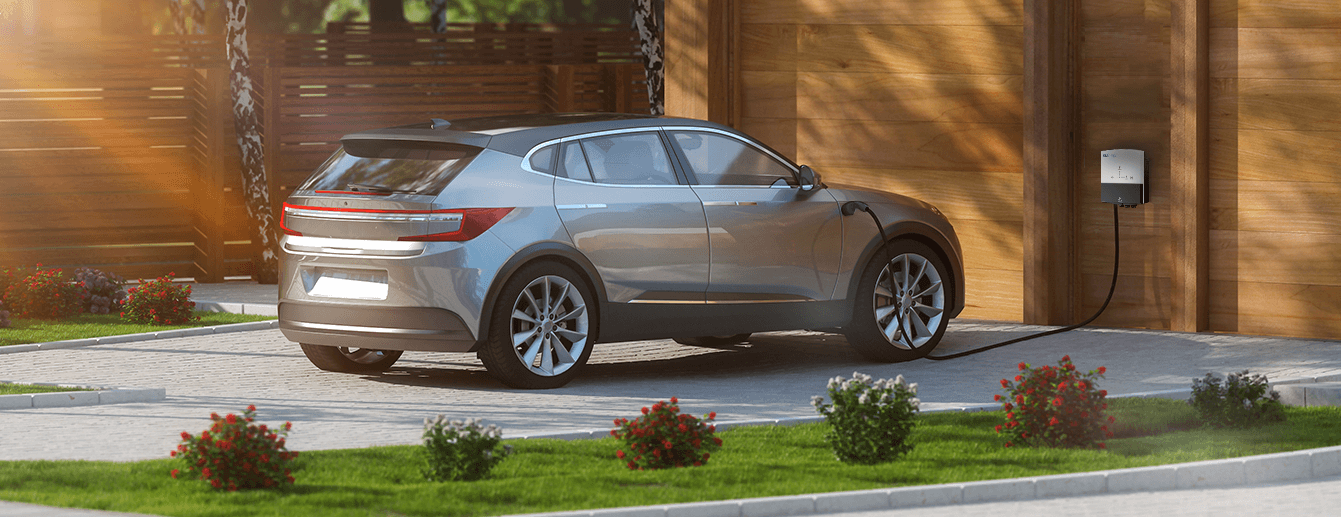
07 What size solar battery do I need?
Your needed solar battery capacity will depend, in part, on the size and productivity of your solar array. Simply, the more energy generated from your solar panels, the more storage capacity you’ll need.
Other factors to consider when sizing up battery capacity include:
- The size of your property
- How many people live in the home
- Home energy usage, considering any high-consumption needs such as EVs, hot tubs, swimming pools, etc
To answer to these variables, GivEnergy batteries range from 2.6kWh capacity to 13.5kWh capacity. If your needs are high, you have can have more than one battery. (Up to 5 batteries per inverter, in fact.) And, if your needs change, you can easily scale your setup with additional batteries over time.
Ultimately, your GivEnergy installer will be able to advise on the best battery capacity for your home. They’ll recommend the optimal solar battery storage system after learning more about your needs and setup.
08 Can the same installer fit my battery and my solar panels?
Usually, but not always. It depends on whether your solar panel installer is also an approved GivEnergy installer.
Not every solar panel installation company is an approved GivEnergy installer, and not every approved GivEnergy installer also fits solar panels. (Though the two often overlap.)
Only electricians who have completed our GivEnergy training are permitted to install our products. This training is a completely free, online course that takes only a couple of hours to complete. So, if your solar panel installation company isn’t yet an approved GivEnergy installer, it’s easy for them to become one. They can then handle both the solar and storage aspects of your project.
Or, to make sure your installer is already approved to fit GivEnergy products, you can kickstart your search by finding an approved GivEnergy installer in your area. Just check that they also take on solar projects when reaching out.
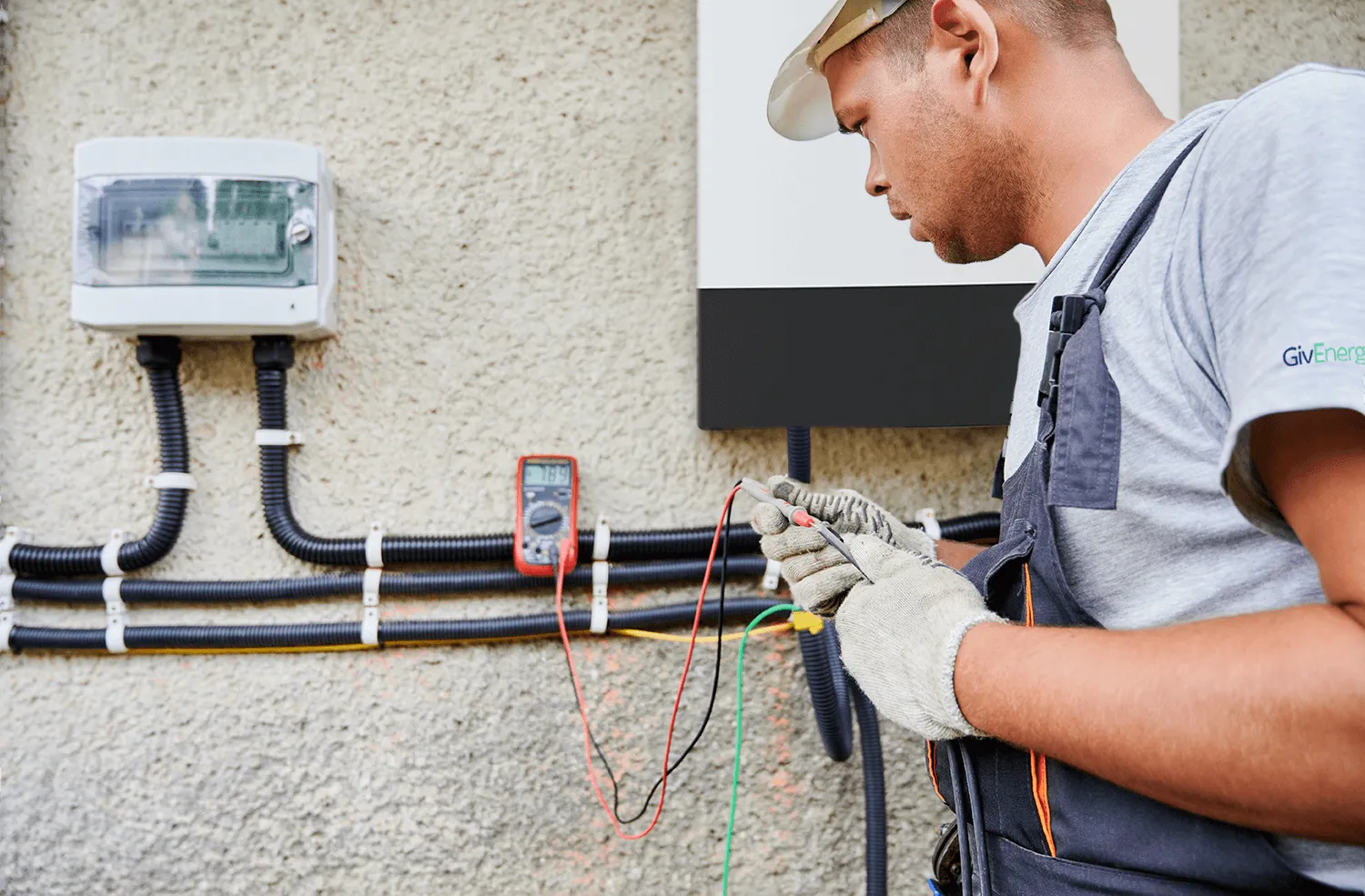
09 How long will my solar battery live?
Your GivEnergy solar battery storage solution is built to last. We protect our batteries with a full manufacturer’s warranty that covers you for 12 years. So, you’ll get a minimum of a decade from your home battery.
10 How can I manage my solar battery storage solution?
You can be as hands-on or as hands-off with your solar battery storage system as you prefer.
For those who simply want to set and forget, the system’s default ECO mode will dynamically maximise your self-consumption. Meanwhile, inbuilt algorithms mean that your battery will charge and discharge intelligently – automatically taking advantage of cheap rates. This means that, if you choose, you can leave your solution to ‘just work’.
For those who want a more hands-on approach, we also offer best-in-class energy management software as part of your solar battery storage solution. This software puts efficient, ongoing energy management in your power.
To manage your system, you can use:
- The GivEnergy monitoring portal: allows you to remotely manage your system via a clean, easy-to-use interface. You get complete control, up-to-the-minute visibility, and granular data insights.
- The GivEnergy app: gives you quick, easy access to your system on the move.
- The GivEnergy API: allowing more technical users to set custom automations.
So, when it comes to system management, we cater to both ends of the spectrum.

